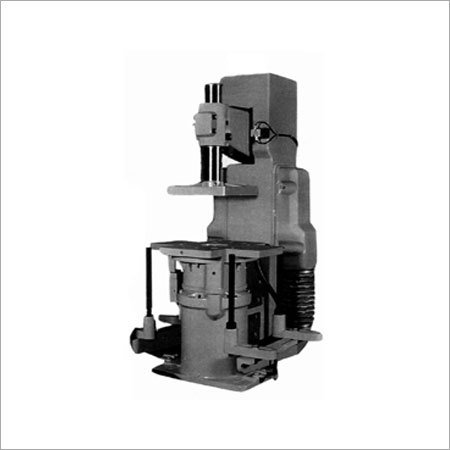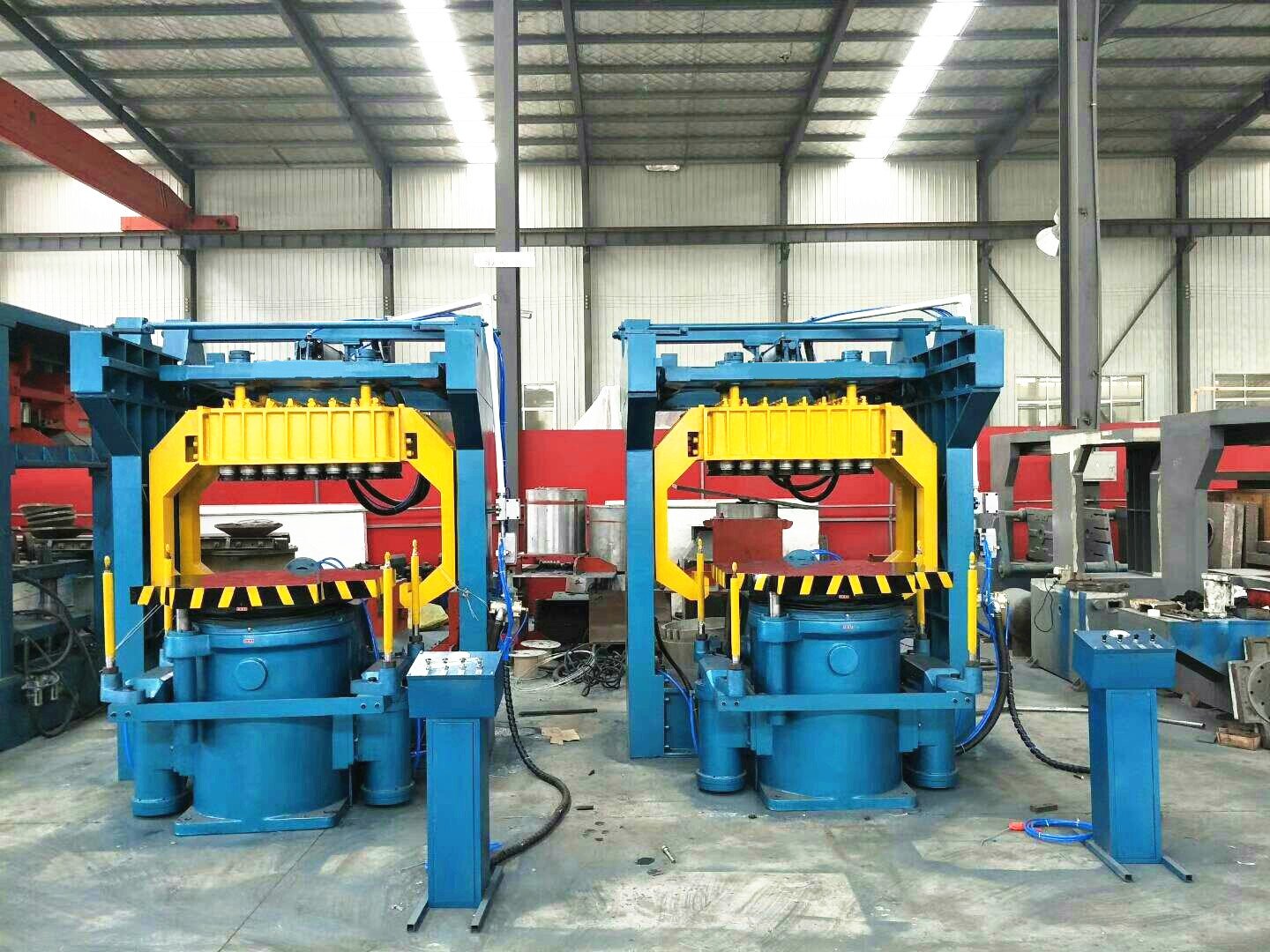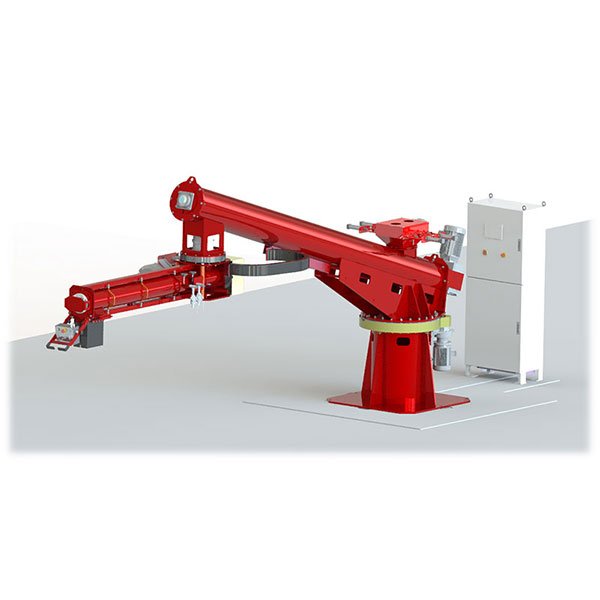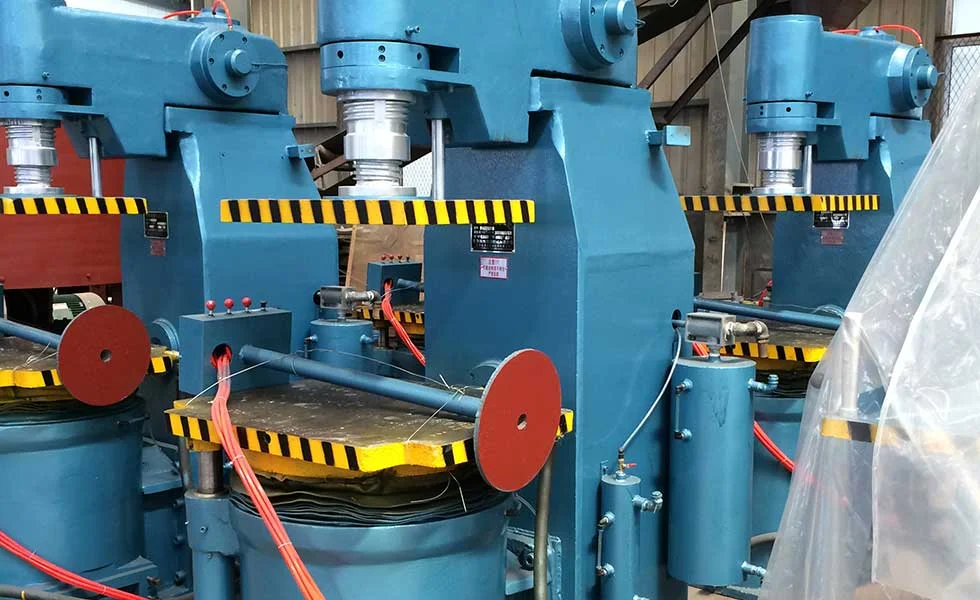Inconsistent cleaning on irregular parts? Damaged workpieces after tumble blasting? These issues are common in industries handling heavy, complex components.
A hanger shot blasting machine suspends workpieces on rotating hooks, exposing all surfaces to high-velocity abrasive media for efficient and thorough cleaning of castings, welded parts, and structural components.
As someone who has worked with shot blasting systems for over 20 years, I can confidently say that hanger-type machines offer unmatched flexibility and consistency when dealing with parts that aren’t flat, uniform, or lightweight.
What Is a Hanger Shot Blasting Machine?

Many components, like motorcycle frames or cast engine brackets, are too complex or fragile for traditional tumble blast systems. That’s where hanger machines come in.
A hanger shot blasting machine uses a hook system to suspend workpieces inside a blasting chamber. Rotational motion allows 360° coverage as multiple blast turbines clean the entire surface.
This design makes it ideal for handling irregularly shaped, medium-to-large parts without the need for trays or support fixtures.
Typical Applications
| Industry | Common Workpieces |
|---|---|
| Automotive | Chassis parts, motorcycle frames |
| Foundry | Iron and stainless steel castings |
| Steel Fabrication | Pipes, structural beams, weldments |
| Die Casting | Aluminum, zinc, and copper cast products |
Compared to mesh belt or tumble blast systems, hanger machines are better suited for batch processing, delicate mounting, and fully automated lines with robotic integration.
How Does a Hanger Shot Blasting Machine Work?
The system operates in timed cleaning cycles. Workpieces are hung on hooks, rotated inside a sealed chamber, and blasted from multiple angles to achieve comprehensive coverage.
1. Batch Loading via Hook System
Operators (or automated systems) load parts onto a rotating hook. Depending on the machine’s configuration, the hook may travel along an overhead rail (Y-type) or be fixed in place (I-type).
Once inside the chamber:
- The hook begins rotating, or oscillating if dual-axis
- Blast wheels engage with pre-set timing and power
- Abrasive is directed at all sides of the workpiece
- After the cycle, hooks reverse and exit for unloading
This method minimizes part collision, reduces labor, and ensures even treatment—especially critical for heat-treated or precision parts.
2. Shot Blasting Chamber Operation
| Feature | Function |
|---|---|
| Manganese Steel Liners | Wear-resistant interior panels extend chamber life |
| Angled Blast Turbines | Ensure no “dead zones” or missed areas on irregular parts |
| Sealed Pneumatic Doors | Auto-locking with safety interlocks to prevent accidents |
| Repeatable Timer Cycles | Consistent blasting duration and surface result |
Our team once installed a double-hook system for a steel foundry, and the result was a 35% reduction in uncleaned zones compared to their old tumble unit.
Main Features of a Hanger Shot Blasting Machine
Smart design elements and durable components make this machine reliable and cost-effective for continuous use.
Highlighted Features
| Feature | Benefit |
|---|---|
| Rotating Hook Mechanism | Enables 360° surface exposure |
| Bidirectional Blast Wheels | Adjustable coverage angles and speed |
| Efficient Abrasive Recovery | Screw conveyors + bucket elevator + air separator |
| No Foundation Required | Simplifies installation in existing workshops |
| Dual-Mode PLC Control | Automatic/manual options with real-time diagnostics |
| Timers & Hour Counters | Ensure maintenance scheduling and energy monitoring |
Most machines come equipped with Siemens or equivalent PLCs and support advanced options like auto door control, shot valve regulation, and cycle memory presets.
Applications of Hanger Shot Blasting Machines

With strong cleaning power and high adaptability, hanger machines are used in a wide range of industries and production environments.
1. Industry-Specific Uses
- Automotive: Suspension arms, engine cradles, cross members
- Foundry: Grey iron and alloy steel castings in small batches
- Fabrication: Welded I-beams, tubular structures, chassis parts
- Die Casting: Pressure-cast aluminum housings and decorative panels
2. Workpiece Compatibility
| Part Type | Machine Suitability |
|---|---|
| Irregular shapes | Full-coverage rotation ensures uniform cleaning |
| Fragile or precision components | No tumbling, minimal vibration |
| Medium to heavy-duty cleaning | Adjustable blast intensity and turbine power configurations |
We’ve supported clients in rail, wind power, and heavy truck industries—each needing slightly different setups. Customization is the key.
Benefits of Using a Hanger Shot Blasting Machine
Whether it’s for cleaning, deburring, or shot peening, the machine delivers high-quality results while optimizing manpower and throughput.
Core Advantages
| Benefit | Description |
|---|---|
| Full Surface Cleaning | No shadow zones thanks to rotational movement |
| Increased Fatigue Strength | Shot peening effect improves surface hardness |
| High Automation Potential | Integration with conveyors and robotic arms possible |
| Versatile Application | Handles various part sizes and materials |
| Efficient Media Recovery | Reduces consumable waste, lowers cost per part |
| Quick Installation | No civil foundation work required |
Clients with multi-shift operations particularly value the machine’s consistent cycle times and ease of control.
Customization Options for Hanger Shot Blasting Machines
No two factories are alike—neither should their blasting machines be.

| Custom Option | Available Configurations |
|---|---|
| Structure Type | I-type (fixed hook) or Y-type (traveling hook on rail) |
| Hook Quantity | Single or double hook (for loading/unloading alternation) |
| Chamber Size | Adjustable based on max workpiece dimensions |
| Blast Wheel Count | From 2 to 8 depending on coverage and productivity goals |
| PLC Control | Custom interfaces, memory settings, touchscreen options |
I always recommend starting with real workpiece samples. A test run reveals whether hook spacing, turbine angles, and shot flow match your expected results.
Key Components and Technical Configuration
Each part of the machine plays a specific role in performance, energy use, and maintenance planning.
Major Components
| Component | Description |
|---|---|
| Shot Turbines | Cantilever centrifugal design with high-speed rotation |
| Electrical Cabinet | Siemens PLC with touchscreen (HMI), cycle settings, and alarms |
| Media Circulation | Screw conveyors, vertical elevator, air separator |
| Safety Systems | Door interlocks, pneumatic cylinders, emergency stop circuits |
| Dust Collection Unit | Cartridge or bag filter system, integrated or external option |
Modern units also include usage counters, overload protection, and automatic feedback on media flow rate and temperature.
Hanger Shot Blasting Machine vs Other Shot Blasting Systems

Still choosing between machine types? Here’s how hanger systems compare with mesh belt and tumble models.
| Machine Type | Best For | Pros | Cons |
|---|---|---|---|
| Hanger Type | Complex, medium-to-large components | Full 360° cleaning, low deformation risk | Not ideal for flat plates |
| Mesh Belt Type | Flat or delicate components in high volumes | Continuous flow, automated inline integration | Limited for large or bulky parts |
| Tumble Type | Small, robust parts in high quantities | Efficient for bolts, fasteners, etc. | Not suitable for fragile parts |
We often help clients assess layout space, product variety, and production goals before suggesting a specific model.
Safety and Maintenance Tips for Hanger Shot Blasting Machines
Proper care extends machine life, ensures operator safety, and reduces unexpected downtime.
Routine Practices
- Inspect hook chains, bearings, and motors weekly
- Monitor shot size, shape, and volume—adjust as needed
- Clean air filters and separator screens monthly
- Lubricate conveyor, rotation, and turbine shafts as scheduled
- Verify all interlocks and safety mechanisms before each shift
Our support team usually provides a preventive maintenance schedule tailored to each installation.
FAQs About Hanger Shot Blasting Machines
What kinds of parts are ideal for hanger machines?
Castings, welded structures, tubular frames, and irregular-shaped components.
How does it differ from mesh belt or tumble blasting?
Provides rotational, full-surface coverage without tumbling or conveyor contact.
Can it handle large parts?
Yes—custom hook designs support workpieces over 2 tons.
What are the customization options?
Everything from chamber size to turbine configuration and automation level.
How is the abrasive recovered and reused?
Via screw conveyors, elevator, and air separator—clean shot is reused automatically.
Conclusion
Hanger shot blasting machines combine reliability, flexibility, and performance in one powerful package. For medium to large complex parts, no other solution matches its precision, coverage, and customization potential. With the right setup and support, it becomes the cornerstone of any high-quality surface treatment process.







